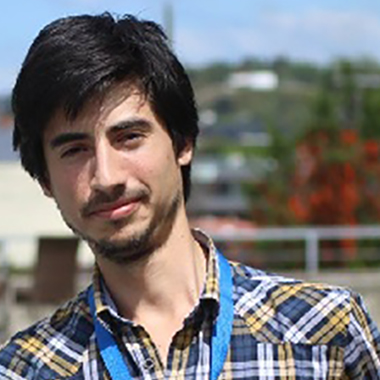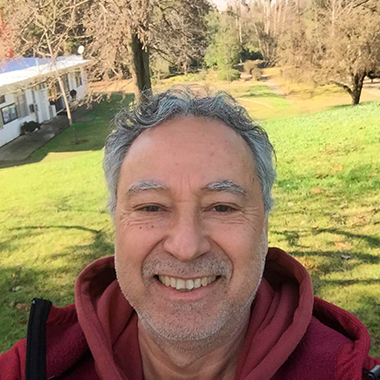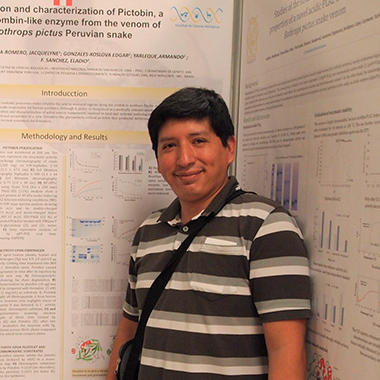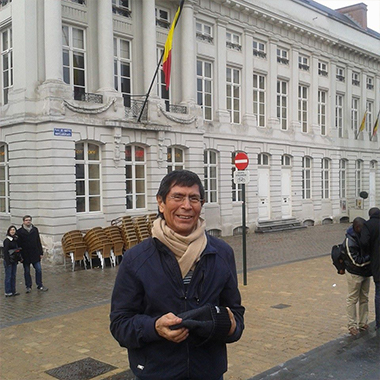Team
Chile

Dr. Félix A. Urra
Director / Principal Investigator
Address: Independencia 1027, Santiago.
Email: felixurraf@u.uchile.cl
Webpage
Laboratory of Metabolic plasticity and Bioenergetics
Faculty of Medicine, Universidad de Chile
Our laboratory studies the role of calcium and non-essential amino acids in the rewiring of mitochondrial bioenergetics during the proliferation and migration of cancer cells. Besides, we identify new bioactive compounds with mitochondrial action, exploring synthetic compounds or toxins from snake and amphibian´s secretions. For this, we evaluate the cellular metabolism in real-time using XFe96 technology, RNA-seq analysis, metabolomics, and microscopy-based methods. Moreover, we study the venom delivery system and the identification of toxins-encoding genes from rear-fanged snakes Incaspis, Philodryas, and Tachymenis and their clinical implications.
Keywords: cellular mechanism, mitochondria toxins, cell signaling.

Dr. Rodrigo Pulgar
Alternate Director
Address: El Líbano 5524, Macul, Santiago.
Email: rpulgar@inta.uchile.cl
Webpage
Laboratory of Genomics and Genetics of Biological Interactions
Instituto de Nutrición y Tecnología de los Alimentos (INTA), University of Chile
Our research interests are focused on the study of cellular and molecular mechanisms involved in the bacteria-host relationships, using as biological models fish cells and intracellular bacteria Piscirickettsia salmonis y Renibacterium salmoninarum, which are highly relevant for productive industry. This relationship is studied by performing controlled infections in vitro, which can be disturbed by the availability of nutrients such as iron, copper, selenium, and cholesterol. These processes are characterized by molecular biology, microscopy, and genomic techniques.
Keywords: Host-microorganism interaction, genomics, bioinformatics, pharmaconutrition.

Dr. Ramiro Araya-Maturana
Associate Investigator
Address: Campus Lircay, Av. Lircay s/n, Talca.
Email: raraya@utalca.cl
Webpage
Laboratory de Bioactive Products
Instituto de Química de Recursos Naturales, Universidad de Talca
Our research interests involve the fields of organic and medicinal chemistry. Including synthesis, reactivity studies, and preclinical pharmacological evaluation of redox-active compounds, targeted to mitochondria, mainly in cancer and antiplatelet areas. Our aims are 1) Design and obtaining efficiently bioactive compounds, by using green methodologies, 2) Obtaining of compounds with antimetastatic and/or antiplatelet effect by interrupting mitochondrial metabolism.
Keywords: polyphenols, quinones, mitochondria.
Perú

Dr. Armando Yarlequé
Principal Investigator
Address: Ciudad Universitaria – UNMSM, Cercado de Lima.
Email: ayarlequec@unmsm.edu.pe
Webpage
Laboratory of Molecular Biology.
Faculty of Biological Sciences, Universidad Nacional Mayor de San Marcos, Lima, Peru.
Our Laboratory is one of the Peruvian references on the study of animal poisons with emphasis on snake venom. The principal aim of the laboratory is the functional and structural characterization of the most representative components in snake venoms based on the biochemical, molecular, biological, and immunological approaches that have led to the characterization of more than thirty active principles of Bothrops, Crotalus, and Lachesis genera. The laboratory has a serpentarium that houses specimens of clinical importance in Peru. Currently, it has started in the field of recombinant technology for a better characterization of enzymes and/or peptides that have potential in the field of biomedicine and biotechnology.
Keywords: Biochemical characterizations, toxins, recombinant toxins, antivenoms.

Dr. Dan Vivas-Ruiz
Associate Investigator
Address: Ciudad Universitaria – UNMSM, Cercado de Lima.
Email: dvivasr@unmsm.edu.pe
Webpage
Laboratory of Molecular Biology.
Faculty of Biological Sciences, Universidad Nacional Mayor de San Marcos, Lima, Peru.
Our Laboratory is one of the Peruvian references on the study of animal poisons with emphasis on snake venom. The principal aim of the laboratory is the functional and structural characterization of the most representative components in snake venoms based on the biochemical, molecular, biological, and immunological approaches that have led to the characterization of more than thirty active principles of Bothrops, Crotalus, and Lachesis genera. The laboratory has a serpentarium that houses specimens of clinical importance in Peru. Currently, it has started in the field of recombinant technology for a better characterization of enzymes and/or peptides that have potential in the field of biomedicine and biotechnology.
Keywords: Biochemical characterizations, toxins, recombinant toxins, antivenoms.
Brazil

Dr. Eladio Flores Sánchez
Principal Investigator
Address: Rua Conde Pereira Carneiro, 80, Bairro Gameleira-Belo Horizonte/MG.
Email: eladio.flores@funed.mg.gov.br
Laboratory of Biochemistry of Proteins from Animal Venoms – SBVA
Fundação Ezequiel Dias – Belo Horizonte, Brazil
Animal venoms are a rich source of natural compounds with high affinity and selectivity on a variety of molecular targets of physiological systems, including, hemostasis, cardiovascular and nervous. The main topic of research is the study of active molecules from Viperidae venoms, e.g. proteins with or without enzymatic activity as relevant models in a search for thrombolytic/anti-thrombotic agents. Platelets act on coagulation and hemostasis through different but highly integrated ways. In response to vascular injury, circulating platelets become activated and interact/adhere to subendothelial matrix proteins such as vWF and collagen. Two key adhesion receptors, glycoprotein GPVI (primary receptor for collagen) and GPIb, which binds vWF works in concert to mediate platelet activation and adhesion in thromboembolic diseases. Platelets, in addition to a major role in hemostasis/thrombosis have an emerging role in biological/pathophysiological processes such as inflammation, immunity, and cancer metastasis. Our group performs structure-function studies of snake venom derivatives with action on the mechanism of hemostasis and cell-protein/receptor interaction.
Keywords: Antithrombotics, snake toxins, metalloproteinases, platelets, receptors.
